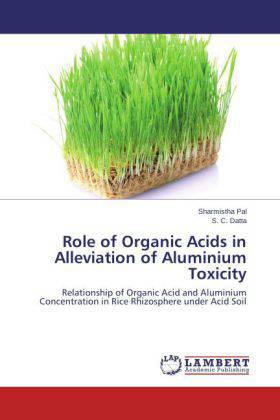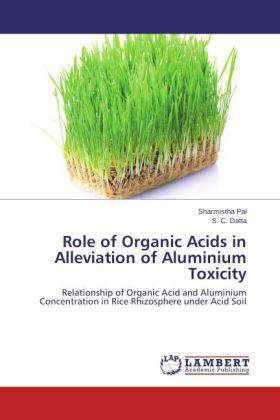
- Afhalen na 1 uur in een winkel met voorraad
- Gratis thuislevering in België vanaf € 30
- Ruim aanbod met 7 miljoen producten
- Afhalen na 1 uur in een winkel met voorraad
- Gratis thuislevering in België vanaf € 30
- Ruim aanbod met 7 miljoen producten
Zoeken
Role of Organic Acids in Alleviation of Aluminium Toxicity
Relationship of Organic Acid and Aluminium Concentration in Rice Rhizosphere under Acid Soil
Sharmistha Pal, S. C. Datta
Paperback | Engels
€ 48,95
+ 97 punten
Omschrijving
The main purpose of the study was to evaluate the effect of organic acid on aluminium toxicity in rice rhizosphere. Interrelationship of organic acid and aluminum concentration in soil solution of rhizosphere and non-rhizosphere of rice (var Satabdi and IR 64) was studied by growing rice plant in plastic pot containing 500 g soil. Three organic acids viz. tartaric, oxalic and citric acids were identified and quantified rice rhizosphere and non-rhizoshere. Organic acids were found to be more in rhizosphere and early stage of crop growth, decrease sharply after 30 days of germination and found in negligible quantity after 45 days of germination. Regression analysis reveled a significant and negative relationship between solution aluminium and organic acid. Satabdi showed higher organic acid concentration in rhizosphere leading to lower root and shoot aluminium concentration and consequently significantly higher dry matter production as well as root volume compared IR 64. The finding established that organic acid can effectively reduce aluminium concentration in soil solution resulting into better crop growth.
Specificaties
Betrokkenen
- Auteur(s):
- Uitgeverij:
Inhoud
- Aantal bladzijden:
- 76
- Taal:
- Engels
Eigenschappen
- Productcode (EAN):
- 9783659149405
- Verschijningsdatum:
- 24/04/2014
- Uitvoering:
- Paperback
- Afmetingen:
- 150 mm x 220 mm
- Gewicht:
- 122 g

Alleen bij Standaard Boekhandel
+ 97 punten op je klantenkaart van Standaard Boekhandel
Beoordelingen
We publiceren alleen reviews die voldoen aan de voorwaarden voor reviews. Bekijk onze voorwaarden voor reviews.








